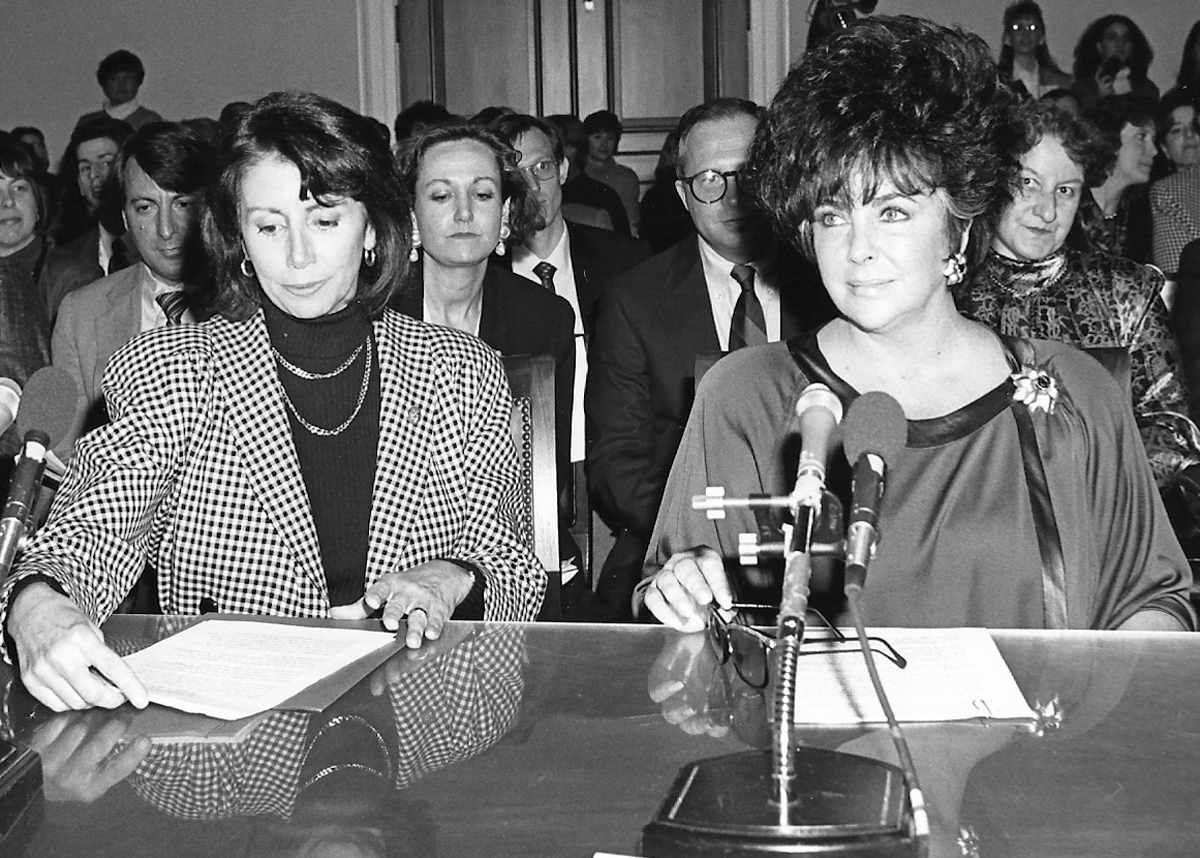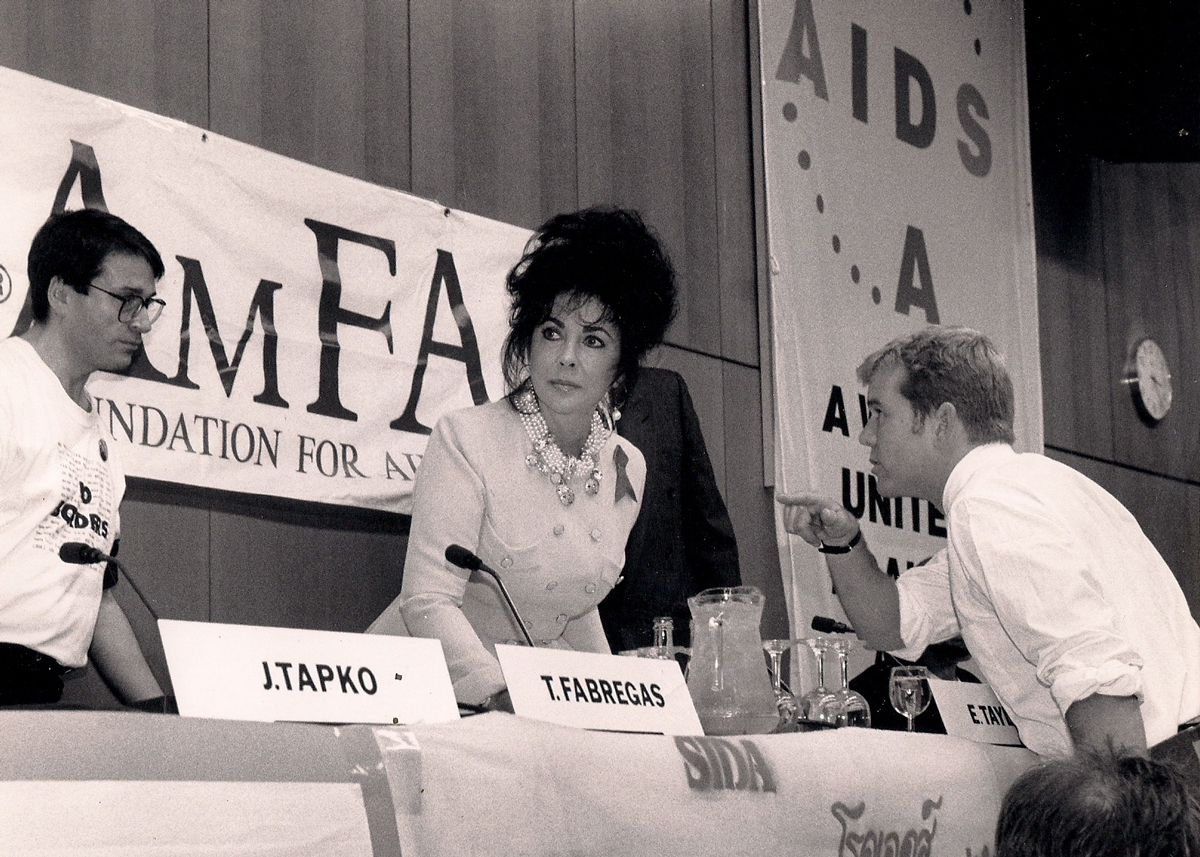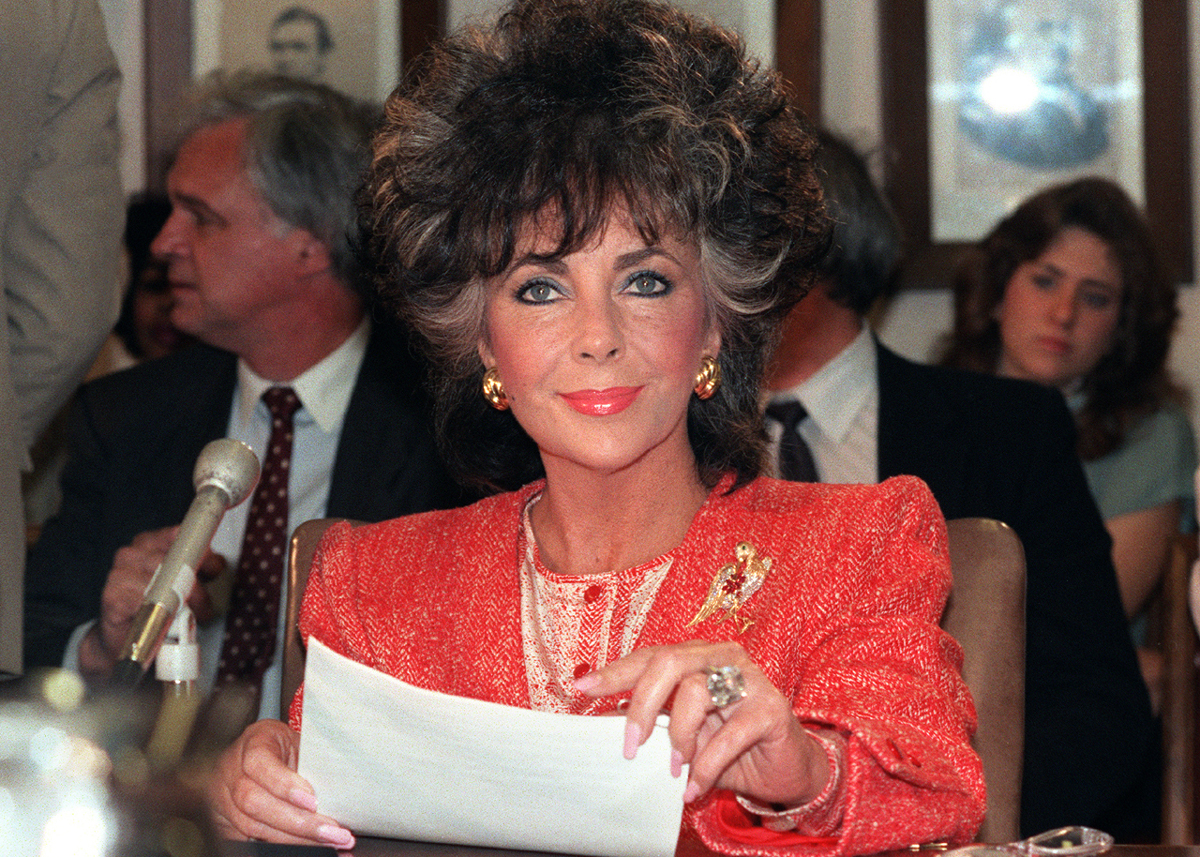
The Handshake Seen Around the World
Elizabeth Taylor knew how to leverage her star power unlike anyone else. From working a camera to commandeering international headlines, whether calling the shots in French ateliers or in Hollywood movie studios, ever since she was a little girl, Elizabeth made sure that her voice was as loudly heard as her beauty was widely recognized.
Her efforts to raise public awareness and financial resources for the fight against HIV/AIDS was the cause célèbre in which she most fervently used her voice to help those who were being ignored. “There was such stigma involved,” Elizabeth recalled during a C-SPAN telecast. “I was made so aware of this silence, this huge, loud silence regarding AIDS. No one wanted to talk about it or get involved. And it so angered me that I finally thought to myself, ‘Bitch, do something yourself instead of just sitting there getting angry. Do something.’”
Elizabeth began focusing her attention on the health crisis in early 1985, first with AIDS Project Los Angeles (APLA), before later joining the board of directors at the National AIDS Research Foundation (NARF), which later evolved into the American Foundation for AIDS Research (amfAR), for which Elizabeth was one of the founders. And in 1991, Elizabeth started her own organization, The Elizabeth Taylor AIDS Foundation.






Elizabeth understood the HIV/AIDS crisis as an urgent and global demand for social justice and human rights. The need was enormous and layered. Beyond getting people and governments listening and activated, Elizabeth also made sure to understand the crisis from the perspective of those directly affected. Wherever she traveled, she visited hospices, and more often than not, these visits were quietly arranged and undocumented. “Her motives were really pure,” said Tim Mendelson, Co-Trustee of Elizabeth’s Estate and her longtime Personal Assistant. “She didn’t bring cameras with her, because these trips were not photo opportunities. Elizabeth just wanted to visit the patients, find out directly from them what their needs were and protect their anonymity.”
However, one exception was made, and the aftershocks created by the release of this one particular image, according to amfAR “did more than any other single event to quell fears about touching people with AIDS.”
In 1989, Elizabeth traveled to Thailand for the country’s first AIDS benefit. While in Bangkok, Elizabeth wanted to investigate the local situation, but she knew she could not go out without overwhelming fanfare. Traveling alongside Sally Morrison, a publicist for amfAR, Elizabeth instructed Sally to “go to bars. Poke around and see what’s really happening.” Sally discovered the epidemic was not only prevalent in the country’s main city, but there was also a dangerous lack of awareness around it. After receiving Sally’s intel, Elizabeth asked her host if she could visit hospitals and meet with AIDS patients. When her host replied that there was no HIV presence in the city, Elizabeth grew enraged. “That is bullshit!” she proclaimed. “I am not going to the stupid fundraiser unless I visit some patients." Her demand was heard and a visit to a hospital on the outskirts of Bangkok was promptly arranged.
It was at the Chulalongkorn University Hospital where the infamous photo was taken, which depicts a gracious and glamorous Elizabeth shaking hands with an AIDS patient, who contracted the virus from a blood transfusion. According to Dr. Praphan Phanuphak, who oversaw Elizabeth’s visit and is the founder of the Thai Red Cross AIDS Research Center, “I invited Elizabeth to greet this patient to give him some encouragement, because his employers knew about his HIV infection and had fired him from his job, and his family had been evicted from the place where he lived. So Elizabeth visited him in front of a lot of media. The news came out, which told the public that an HIV-infected person is not someone that you have to be afraid of or condemn, and that people can become infected because of a blood transfusion. We were trying to destigmatize HIV/AIDS, but how successful we were we just wonder. This patient’s case immediately triggered the Thai Red Cross National Blood Center to screen every unit of blood.”
It was a monumental handshake that went on to save countless lives. Elizabeth’s dedication to the fight against AIDS was motivated by her love for people and her undying advocacy for equal rights. At the time when the photo was taken, Elizabeth was considered courageous, but really she was educated and emboldened to use all of her resources to help those in need.